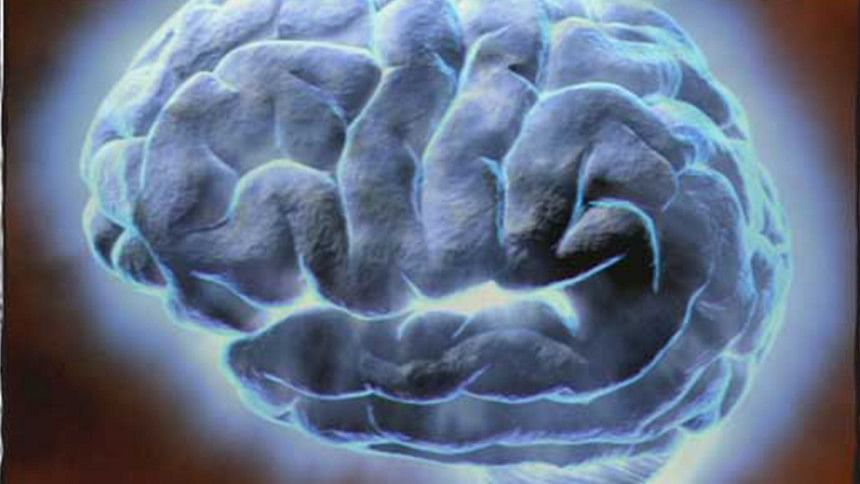How the brain purges bad memories

The brain is extraordinarily good at alerting us to threats.
Loud noises, noxious smells, approaching predators: they all send electrical impulses buzzing down our sensory neurons, pinging our brain's fear circuitry and, in some cases, causing us to fight or flee.
The brain is also adept at knowing when an initially threatening or startling stimulus turns out to be harmless or resolved.
But sometimes this system fails and unpleasant associations stick around, a malfunction thought to be at the root of post-traumatic stress disorder (PTSD).
New research has identified a neuronal circuit responsible for the brain's ability to purge bad memories, findings that could have implications for treating PTSD and other anxiety disorders, reports the scientific american website.
Like most emotions, fear is neurologically complicated. But previous work has consistently implicated two specific areas of the brain as contributing to and regulating fear responses.
The amygdala, two small arcs of brain tissue deep beneath our temples, is involved in emotional reactions, and it flares with activity when we are scared.
If a particular threat turns out to be harmless, a brain region behind the forehead called the prefrontal cortex steps in and the fright subsides.
Our ability to extinguish painful memories is known to involve some sort of coordinated effort between the amygdala and the prefrontal cortex.
The new study, led by Andrew Holmes at the National Institutes of Health, however, confirms that a working connection between the two brain regions is necessary to do away with fear.
Normally mice that repeatedly listen to a sound previously associated with a mild foot shock will learn that on its own the tone is harmless, and they will stop being afraid.
Using optogenetic stimulation technology, or controlling specific neurons and animal behavior using light, the authors found that disrupting the amygdala–prefrontal cortex connection prevents mice from overcoming the negative association with the benign tone.
In neurobiology speak; memory "extinction" fails to occur. They also found that the opposite is true—that stimulating the circuit results in increased extinction of fearful memories.
Until now investigators were unsure whether the amygdala–prefrontal cortex communication pathway could on its own control fear extinction; both structures interact with many other brain regions, and so isolating their effects of on behavior was a challenge.
Optogenetics made the discovery possible, allowing the NIH group to precisely assess only the connection between the two brain regions in real time, providing a more accurate correlation between neuronal activity and behavior.
Holmes sees the amygdala and prefrontal cortex as two major hubs in a complex communications network.
In the case of impaired fear extinction such as PTSD, however, it is just the one connection between the two regions that is faulty, not the hubs themselves.
"To regulate fear extinction," he explains, "I think it will be better to isolate and fix that one line of communication as opposed to trying to reengineer the hubs themselves—it's their job to carry many lines of communication for all manner of brain functions, most of which are probably working just fine."
Given the similarities in fear circuitry between rodents and humans, the new findings could inform research into new therapeutic approaches to anxiety disorders, including into medications that act on the fear circuit.
Holmes believes that healthy fear extinction relies on "neural plasticity," the brain's ability to make new neuronal connections, which is in part influenced by the brain's own cannabinoids, compounds that regulate neurotransmitters.
Drugs that alter the cannabinoid system could provide a way to modify the fear circuit, thereby—possibly—alleviating anxiety.
Neurostimulation technologies, including transcranial magnetic stimulation and even optogenetics, could also potentially be used therapeutically to augment standard anxiety treatments.
One such treatment is exposure therapy, in which patients are repeatedly exposed to a stimulus they find abnormally stressful until it no longer causes anxiety.
Perhaps externally stimulating the fear circuit in combination with repeated recollections of a painful memory—or repeated exposures to a fear-inducing stimulus—might work together to ease the symptoms of PTSD and other anxiety disorders.
As Holmes points out, it is not unlike when your home Internet connection goes sluggish: "Rather than trying to fix the faulty wire on the telephone pole to help boost your signal—and disrupting many lines of communication—it's better to just fix the faulty line of communication."

 For all latest news, follow The Daily Star's Google News channel.
For all latest news, follow The Daily Star's Google News channel. 



Comments